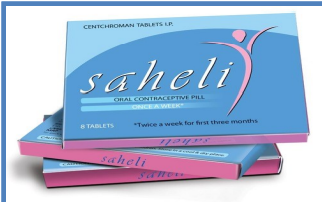Introduction
According to the World Health
Organisation (WHO), reproductive health means total
well-being in all aspects of reproduction, i.e., physical,
emotional, behavioral, and social. Therefore, a society with
people having physically and functionally normal
reproductive organs and normal emotional and behavioral
interactions among them in all sex-related aspects might
be called reproductively healthy.
REPRODUCTIVE HEALTH – PROBLEMS AND STRATEGIES
India was amongst the first countries in the world to initiate action plans and programs at a national level to attain total reproductive Health as a social goal these programs called family planning were Initiated in 1951. In 1977 it changed into the family welfare program “Reproduction and Health care”. According to the 2011 census report, the population growth rate was Less than 2 percent i.e., 20/1000/year.
CONTRACEPTIVE METHODS
The method which prevents unwanted
births or pregnancies.
The characteristics of an ideal contraceptive are listed below:
- User friendly
- Easily available.
- Reversible with no or least side effects.
- No way to interfere with the sexual drive.
- Cheap.
CONTRACEPTIVE METHODS
- Temporary method or spacing method
- Chemical method
- Barrier method
- Hormonal method
- Natural method
- Terminal method
- Vasectomy
- Tubectomy
Chemical method
In this method, chemicals are used which are spermicidal
agents(that substance that kills sperm) or surface-active agents which attach themselves to
spermatozoa and inhibit oxygen uptake
- Vaginal foam/Tablet :- Today(Non-oxynol-9)
- Cream or jelly:- Nim – 76
Barrier method/Mechanical Method
It prevents insemination→Fertilization Stop→ No pregnancy
- Condoms (Polyurexy ethane, Rubber{latex})
- Male Condom:-
- Failure Rate 10-14%
- The only temporary
method of birth control for
men
- The only form of contraception
that effectively reduces STD
transmission
2. Female Condom:-
- Failure Rate 5-15%
- A. Non-medicated medicated.
Mechanism:-
- Promote the phagocytic cell(foreign cell antibody reaction) of the uterus to phagocytosis of sperm within the uterus.
- B. Copper releasing IUDs
- Cu 7
- Cu T
- Multiload 375
Mechanism:-
- Cu ion released suppresses sperm motility and fertilizing capacity of sperm.
- It Increases Phagocytosis of
sperm within the uterus.
- C. Hormone releasing IUDs
- Progestasert
- LNG-20
Mechanism:-
- Make the uterus unsuitable for implantation and the cervix hostile to the sperm.
Side effects:-
- Pelvic Inflammatory diseases
- Lower abdominal pain
- Uterus swelling
- Most effective method; 100% almost
- Most widely used
Female oral pills:-
Daily oral pills➡Mala-N, Mala-D
- Compositions of an oral pill
- Norethisterone acetate (synthetic progesterone)
- Ethynyl estradiol (synthetic Estrogen)
Long time use ➡Side effects
- Nausea
- Blood Pressure varies.
- Disturbs menstrual cycle.
- Constant high level of estrogen in blood➡Breast cancer
- Female sterility chances
- Failure rate = 0.1%
- The daily oral pills are started on the 5th day of the menstruation cycle.
- For 1 to 21 days hormonal Pills are given and iron( Fe) pills are given in the last 7 days for recovery of blood loss in menstruation flow.
INJECTION INJECTION – DMPA-(Depot medroxy progesterone acetate) (Depot medroxy progesterone acetate)
IMPLANT – NORPLANT/SUBCUTANEOUS
- Norplant: 6 silastic (silicon rubber) capsules containing 35mg each of LNG.
- Given sub-cutaneous➡Progesterone➡ Prevent Ovulation
SAHELI
- Nonsteroidal pills
- Weekly oral pills
- Developed at CDRI Lucknow (India).
- Oral contraceptive under the brand name SAHELI.
- Few side effects and high contraceptive value.
Mechanism of Ormaloxifen/ Centchroman (Anti estrogenic)
- Suppressed proliferative stage of Endometrium (blocks estrogen receptor in the uterus) and hence PREVENT IMPLANTATION
GOSSYPOL
- Cotton seed derivative
- Causes Azospermia and severe Oligospermia
- The hormones which reduce sperm count tend to reduce testosterone levels hence they affect potency and libido.
- Use for 6 months leads to complete sterility
- Contraceptive method which are used with in 72 hours of unprotected sexual intercourse. Also known as the “morning after pill"
- Can be taken up to 3-5 days AFTER unprotected sex (depending on brand)
- Examples of pills :- I-pill , Unwanted 72
Mechanism of action:-
- NO implantation and NO fertilization
- IUD:- A copper IUD can be used as emergency contraception if inserted within five days after unprotected sex.
- The IUD will need to be inserted by a healthcare provider
Natural Method
- Rhythm or Periodic abstinence method
In this method couple avoid or abstain coitus form day 10 to 17
of the menstrual cycle when ovulation could be expected
During sexual intercourse, male partner withdraw his penis from
vagina just before ejaculation So as to avoid insemination
- Lactational Lactational amenorrhea amenorrhea
High concentration of Prolactin may lead to inhibition of menstrual cycle in
Lactating mother therefore as long as the Mother breast feeds the child fully,
chances of conception are almost nil.
This method has been reported to be effective only up to max. period of six
months
Terminal method
It is a surgical method/ sterilization- Block gamete transport
thereby prevent conception.These Techniques highly effective but their reversibility is poor
- Female sterilization :- 85 %
- Male sterilization :- 10-15%



















0 Comments
Post a Comment
If you have any doubt, please let me Know